Your dog’s fast breathing can stem from various causes, ranging from normal responses to more serious health issues.
It’s essential to know your pup’s typical breathing rate, which should be 15-35 breaths per minute at rest. Rapid breathing could be due to exercise, heat, anxiety, or pain.
However, if your dog’s breathing remains fast while resting or is accompanied by other symptoms like lethargy or unusual gum color, it’s time to call the vet.
Certain breeds, like brachycephalic dogs, are more prone to breathing difficulties.
By understanding these factors, you’ll be better equipped to spot potential problems and guarantee your furry friend’s respiratory health.
Understanding Normal Canine Breathing Rates
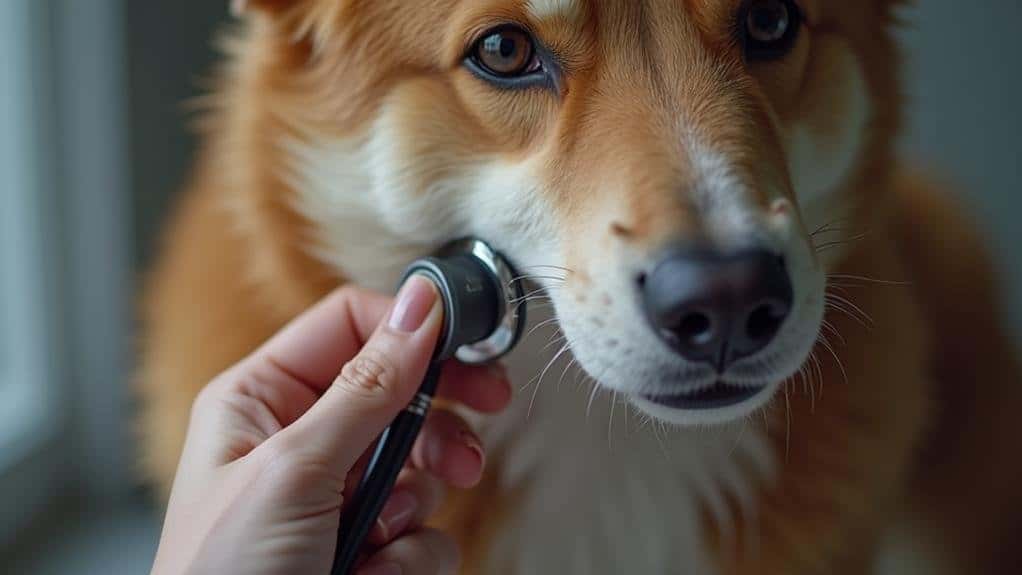
When it comes to understanding your dog’s health, knowing their normal breathing rate is essential.
As a pet owner, you’ll want to familiarize yourself with what’s considered normal for your furry friend.
A healthy dog’s resting respiratory rate typically falls between 15 to 35 breaths per minute. This range is what you should expect when your pup is relaxed and comfortable.
It’s important to note that not all fast breathing is cause for alarm. During exercise or excitement, your dog’s breathing rate can skyrocket to 100 to 350 breaths per minute.
This rapid breathing, often accompanied by panting, is your dog’s way of regulating their body temperature.
However, if you notice fast breathing (over 40 breaths per minute) while your dog is at rest, it could signal a health concern.
To monitor your dog’s respiratory rate:
- Observe your dog when they’re calm and relaxed.
- Count their chest movements for 30 seconds.
- Multiply that number by two to get breaths per minute.
Signs of Rapid Breathing
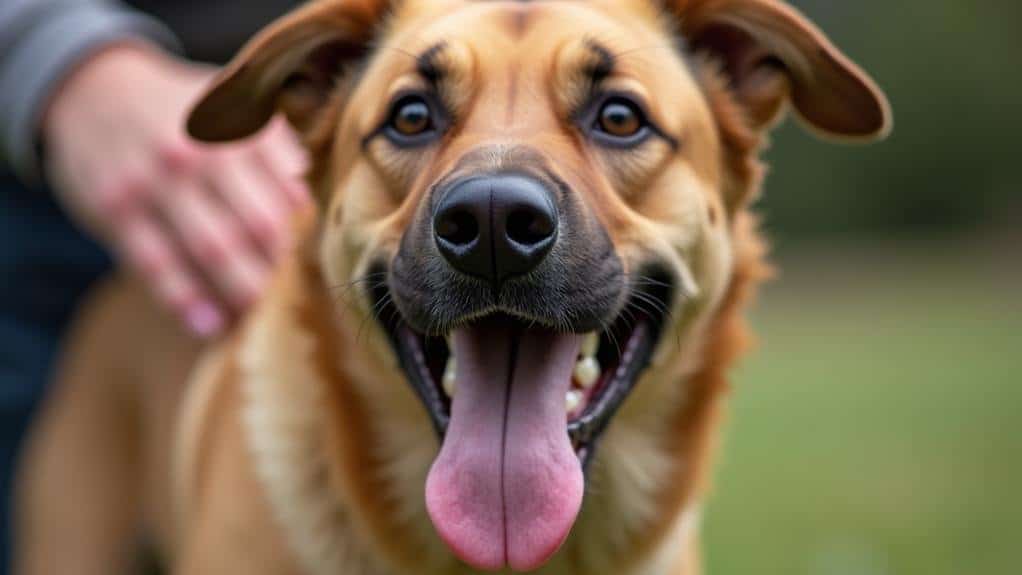
While normal breathing in dogs can vary, recognizing signs of rapid breathing is essential for your pet’s health. Fast breathing in dogs, characterized by more than 35 breaths per minute at rest, can indicate distress or an underlying health issue. To spot this, you’ll need to establish a baseline respiratory rate for your pup during calm periods.
Keep an eye out for these signs of abnormal breathing:
- Use of stomach muscles to assist breathing
- Reluctance to eat or drink
- Unusual gum color (pale, blue-tinged, or brick-red)
- Open-mouthed breathing when not exercising or hot
- Excessive drooling
- Changes in behavior, like lethargy or anxiety
If you notice these symptoms alongside rapid breathing, it’s time to evaluate a vet visit. Your furry friend can’t tell you when something’s wrong, so it’s up to you to be their breathing detective!
Common Causes of Fast Breathing
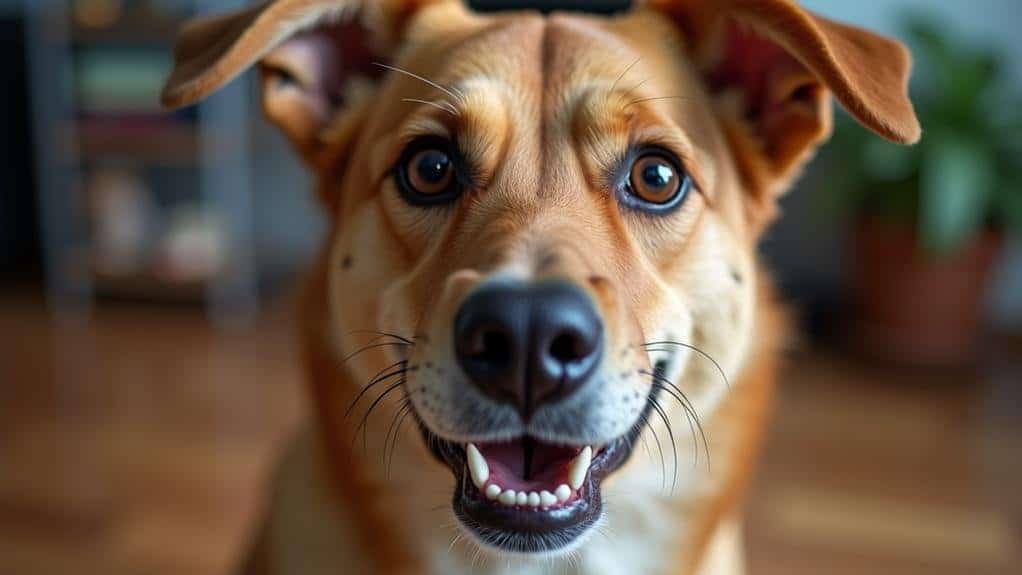
Diving into the common causes of fast breathing in dogs, it’s essential to understand that various factors can trigger this condition. Your furry friend’s rapid breathing might be due to a combination of environmental and health-related issues.
1. Environmental Factors:
Heat and humidity can lead to overheating, causing your pup to pant excessively. This natural cooling mechanism can sometimes result in respiratory distress if not addressed promptly.
2. Health Conditions:
Underlying medical issues like congestive heart failure, pneumonia, or brachycephalic obstructive airway syndrome can cause breathing abnormalities. These conditions often require veterinary attention to manage effectively.
3. Pain and Discomfort:
If your dog’s experiencing pain from injuries or other medical issues, you might notice rapid breathing as they try to cope with the distress.
4. Anxiety and Stress:
Changes in routine, loud noises, or unfamiliar environments can trigger fast breathing in dogs. Keep an eye out for other signs of anxiety alongside the panting.
5. Allergies and Infections:
Respiratory infections or allergic reactions may lead to rapid breathing as your dog’s body attempts to compensate for compromised airflow or inflammation. If you suspect these issues, it’s best to consult your vet for proper diagnosis and treatment.
When to Contact Your Veterinarian
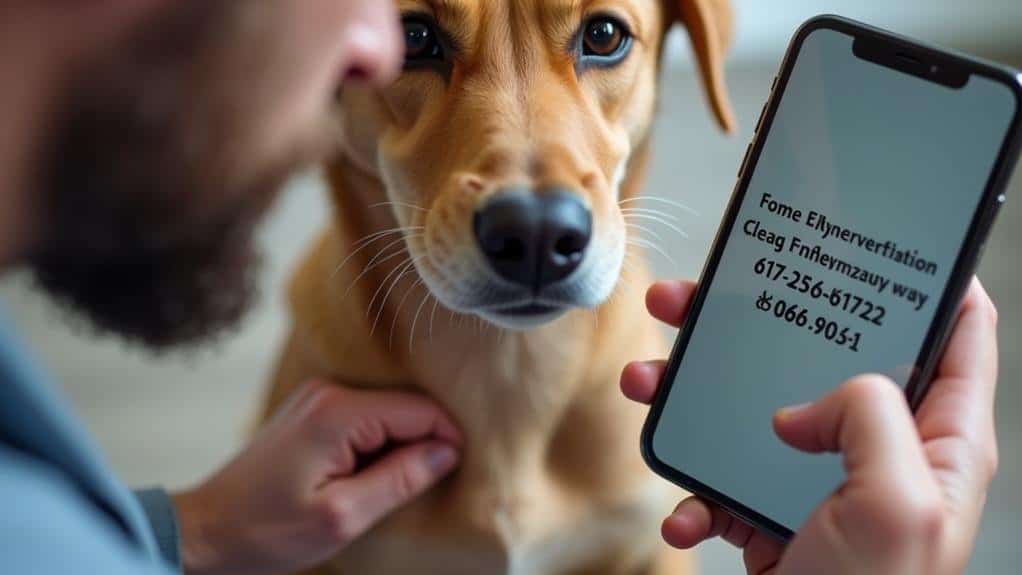
Understanding the common causes of fast breathing in dogs is important, but knowing when to seek professional help is equally vital. As a pet owner, you should be aware of the signs that indicate it’s time to contact your vet about your dog’s breathing abnormalities.
When to Get Veterinary Attention:
- Fast breathing at rest: If your dog’s respiratory rate exceeds 35 breaths per minute while resting or sleeping, it’s a clear sign of distress.
- Open-mouthed breathing: When your pup breathes with an open mouth while at rest (not panting), it’s time for an immediate veterinary consultation.
- Heavy or abnormal panting: Especially if accompanied by coughing or lethargy, this requires prompt attention.
- Other signs of respiratory distress: Watch for labored breathing, unusual gum color, or reluctance to eat, drink, or move.
Monitoring your dog’s respiratory rate regularly can help you establish a baseline.
This makes it easier to spot concerning changes in their breathing patterns.
Diagnostic Procedures for Respiratory Issues
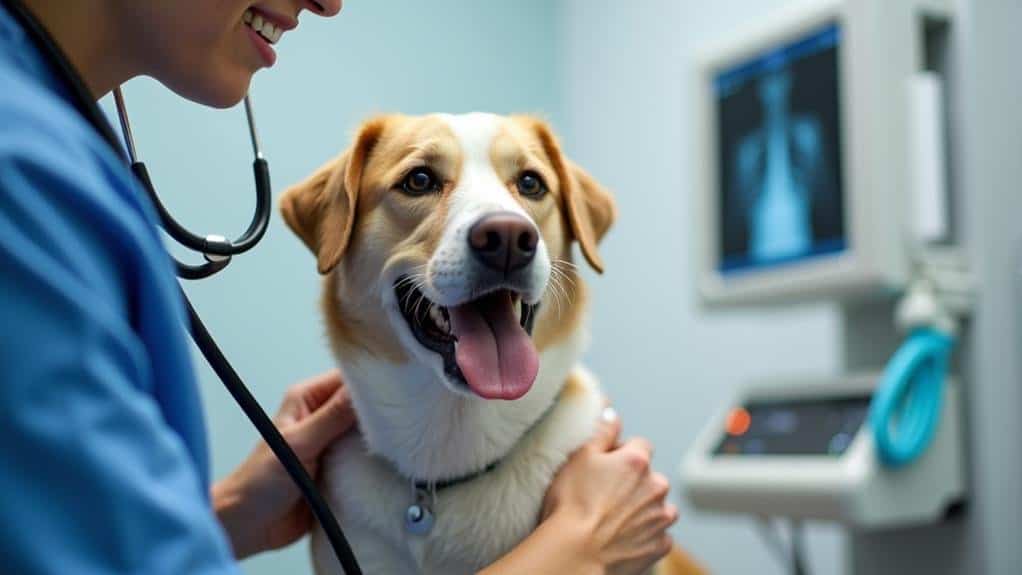
Diagnosing the root cause of your dog’s rapid breathing typically begins with a thorough physical examination by a veterinarian. This extensive check-up allows the vet to identify any underlying respiratory issues that might be causing your furry friend’s discomfort.
During the diagnostic process, you’ll need to provide a detailed medical history of your pup, including any previous health problems and current symptoms. This information helps your vet piece together the puzzle of your dog’s condition.
Next, they’ll likely recommend some diagnostic tests to get a clearer picture of what’s going on inside your pet’s body. X-rays are often the go-to tool for evaluating your dog’s heart and lungs, helping to rule out potential obstructions or infections.
Blood work might also be on the agenda to check for conditions like anemia or other infections that could be affecting your pup’s breathing.
In some cases, your vet might suggest a behavioral assessment if they suspect anxiety or stress could be behind the rapid breathing.
Treatment Options for Rapid Breathing
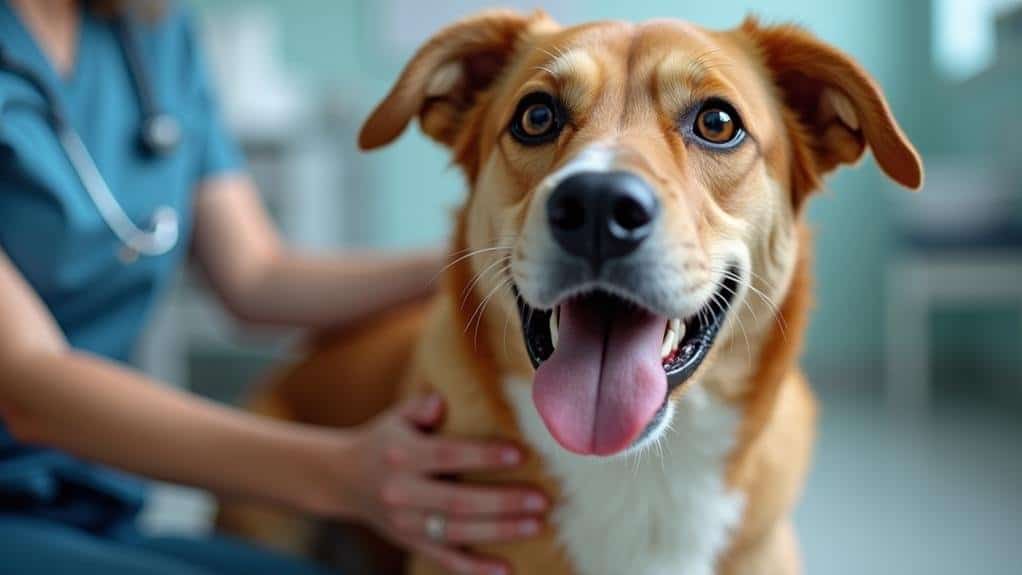
Once the veterinarian has pinpointed the cause of your dog’s rapid breathing, they’ll tailor a treatment plan to address the specific issue.
This plan may include various approaches depending on the underlying cause of your dog breathing fast.
Treatment options often include:
- Medication: Your vet might prescribe drugs for pain relief, anti-anxiety, or anti-inflammatories to help ease your pup’s discomfort and reduce rapid breathing.
- Hydration support: If your furry friend’s not keen on eating or drinking, they may need intravenous fluids to keep them hydrated and feeling their best.
- Oxygen therapy: For dogs in serious respiratory distress, a bit of extra O2 can work wonders to help them breathe easier and get more oxygen to their system.
- Hospitalization: In some cases, like congestive heart failure or pneumonia, your pooch might need a sleepover at the vet’s for closer monitoring and intensive care.
- Lifestyle changes: Your vet may suggest tweaking your dog’s routine, like helping them slim down or finding ways to reduce stress, to prevent future episodes of rapid breathing.
Preventive Measures and Home Care

Pet parents can take several proactive steps to prevent rapid breathing in their furry companions and provide appropriate home care.
By implementing these measures, you’ll be better equipped to maintain your dog’s healthy respiratory (breathing) rate and overall well-being.
- Keep your dog cool: Prevent heat-related rapid breathing by ensuring your pup has access to shade, fresh water, and proper ventilation, especially during hot weather.
- Maintain a healthy weight: Exercise and proper diet are essential in preventing obesity-related breathing issues. Regular walks and portion control can make a significant difference.
- Schedule regular veterinary check-ups: These visits allow for early detection of potential health problems that could lead to fast breathing that’s concerning.
- Create a stress-free environment: Minimize anxiety-induced rapid breathing by providing a calm, comfortable space for your dog to relax.
- Monitor your dog’s breathing: Establish a baseline by regularly observing your dog’s breathing patterns during rest. This practice will help you identify concerning changes promptly.
Breed-Specific Breathing Concerns
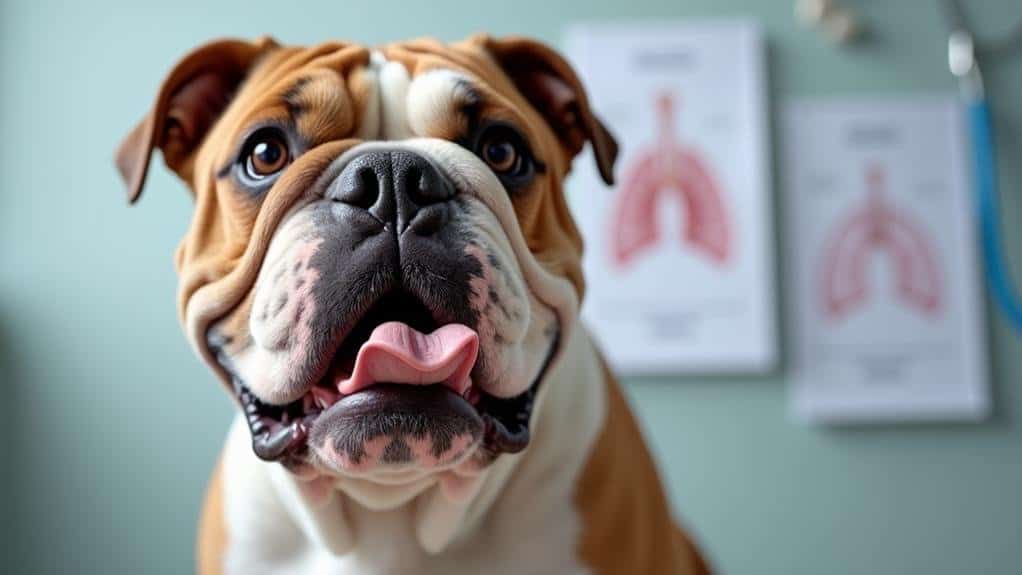
When it comes to rapid breathing in dogs, certain breeds stand out as more susceptible to respiratory issues. If you’re the proud owner of a brachycephalic breed like a Boston terrier or pug, you’ll need to be extra vigilant about their breathing patterns.
These adorable flat-faced pups often experience brachycephalic obstructive airway syndrome (BOAS), which can lead to respiratory distress and rapid breathing, especially when they’re stressed or overheated.
But it’s not just the smoosh-faced cuties who are at risk. Small and toy breeds can face their own set of breathing challenges, like tracheal collapse. This condition can cause abnormal breathing patterns and increased respiratory rates when your little buddy gets excited or worked up.
To stay on top of your pup’s health, it’s essential to:
- Know your dog’s baseline respiratory rate
- Monitor for changes in their breathing
- Be aware of breed-specific risks
Frequently Asked Questions
Why Is My Dog Breathing Fast While Resting?
Your dog’s fast breathing while resting could indicate distress or health issues. It might be due to heart problems, respiratory infections, or overheating. Check for other symptoms and consider your dog’s breed. If concerned, consult a vet promptly.
Is Rapid Breathing in Dogs an Emergency?
Rapid breathing in dogs can be an emergency. You should monitor your dog’s breathing rate closely. If it’s over 35 breaths per minute at rest or accompanied by distress signs, don’t wait—seek immediate veterinary care.
When Should I Be Concerned About My Dog Breathing?
You should be concerned about your dog’s breathing if it exceeds 40 breaths per minute while resting. Watch for labored or open-mouthed breathing, unusual gum color, and reluctance to eat or move. These signs warrant immediate veterinary attention.
How Do I Calm My Dog’s Breathing?
To calm your dog’s breathing, create a quiet environment and use gentle petting. Speak soothingly and model slow breathing. Offer fresh water and make certain they’re cool. If panting persists, move them to a cooler area and provide a damp cloth.
Conclusion
You’ve learned about your dog’s breathing patterns, potential causes for rapid breathing, and when to seek help. Remember, you’re your pup’s best advocate! Keep an eye on their breathing, and don’t hesitate to contact your vet if you’re concerned. With proper care and attention, you’ll be better equipped to handle any respiratory issues that may arise. Your furry friend’s health is in your hands, so stay vigilant and give them the love and care they deserve!

